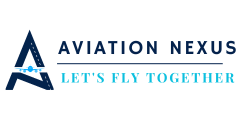Chicago — United Airlines says it is seeing a strong rebound in travel demand, with CEO Scott Kirby declaring that “uncertainty has declined” and forward bookings are trending above pre-pandemic levels in several key markets.
The statement comes as the airline reported its second-quarter earnings on Thursday, showing a 9% year-over-year increase in passenger revenue and a 5% rise in international load factors. Corporate travel, which lagged during much of the pandemic recovery, has also shown renewed momentum, particularly on transatlantic and transpacific routes.
“We are clearly entering a new phase of post-pandemic travel. The volatility that defined the last few years is behind us, and customer confidence is back,” Kirby told analysts during the airline’s earnings call. “Uncertainty has declined significantly, and demand is stabilizing at very healthy levels.”
Resilience Across Markets
United highlighted robust growth in international demand, with routes to Europe, Asia, and Latin America all outperforming forecasts. Flights to Japan and South Korea saw double-digit growth in premium cabin bookings, while Europe-bound capacity is nearing all-time highs.
Domestic traffic has also rebounded, though with mixed regional performance. The U.S. Northeast and West Coast remain strong, while some smaller markets continue to recover at a slower pace.
Kirby said leisure travel remains “exceptionally strong” and that business travel is showing “signs of normalization,” with more corporate clients returning to regular in-person meetings and international travel.
Fleet Expansion and Capacity Plans
United reaffirmed its aggressive fleet renewal strategy, with 35 new aircraft delivered in the first half of 2025, including Boeing 787s and Airbus A321XLRs. The carrier expects to take delivery of more than 100 new aircraft by the end of next year as part of its “United Next” initiative.
With confidence in demand returning, the airline plans to increase capacity by 7–9% in 2026, focused primarily on long-haul international routes and hub-to-hub connectivity.
“We’re building the airline of the future, and these demand signals tell us we’re on the right path,” Kirby said.
Cautious Optimism in a Changing Environment
Despite rising operational costs, particularly in labor and fuel, United posted a solid profit margin for the quarter. The airline credited strong yield management and higher ancillary revenues—such as upgraded seats and premium economy sales—for offsetting cost pressures.
Industry analysts are interpreting United’s results as a positive sign for global aviation recovery in 2025.
“The tone from United suggests a real turning point,” said Helen Matthews, senior aviation analyst at Skymark Insights. “They’re seeing stability in what had been a highly unstable environment. That bodes well for the broader market.”
However, Matthews cautioned that global geopolitics, fluctuating fuel prices, and persistent air traffic control delays—particularly in Europe—could still weigh on the outlook.
Looking Ahead
United is also expanding its digital platforms and airport infrastructure, including new terminal investments at Chicago O’Hare and Denver. The airline is positioning itself to compete aggressively in the premium and international segments as market confidence improves.
Kirby closed the earnings call on a note of confidence, saying United is “better prepared than ever” to respond to future demand shifts.

